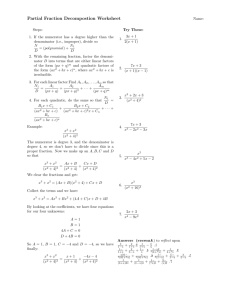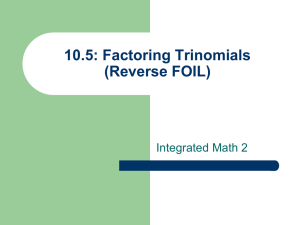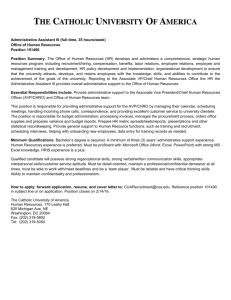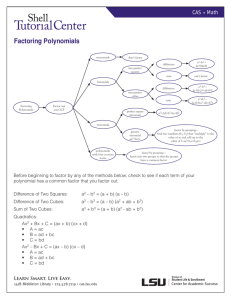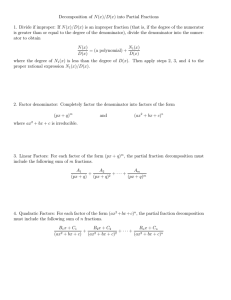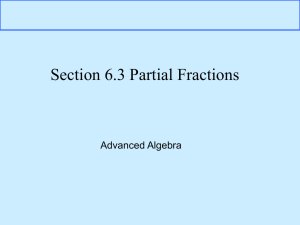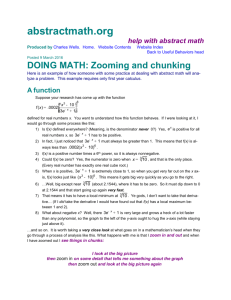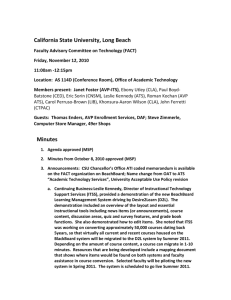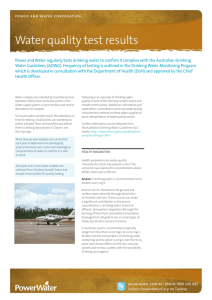y = ax2 + bx + c, three x, y data points: (30, 4
advertisement
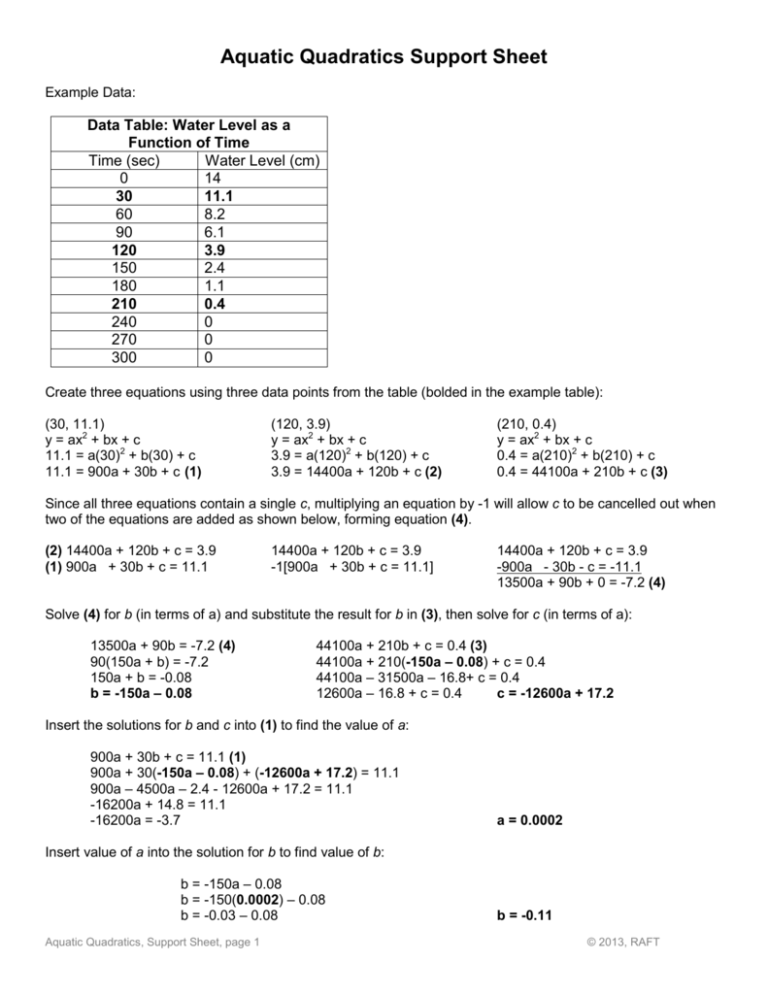
Aquatic Quadratics Support Sheet Example Data: Data Table: Water Level as a Function of Time Time (sec) Water Level (cm) 0 14 30 11.1 60 8.2 90 6.1 120 3.9 150 2.4 180 1.1 210 0.4 240 0 270 0 300 0 Create three equations using three data points from the table (bolded in the example table): (30, 11.1) y = ax2 + bx + c 11.1 = a(30)2 + b(30) + c 11.1 = 900a + 30b + c (1) (120, 3.9) y = ax2 + bx + c 3.9 = a(120)2 + b(120) + c 3.9 = 14400a + 120b + c (2) (210, 0.4) y = ax2 + bx + c 0.4 = a(210)2 + b(210) + c 0.4 = 44100a + 210b + c (3) Since all three equations contain a single c, multiplying an equation by -1 will allow c to be cancelled out when two of the equations are added as shown below, forming equation (4). (2) 14400a + 120b + c = 3.9 (1) 900a + 30b + c = 11.1 14400a + 120b + c = 3.9 -1[900a + 30b + c = 11.1] 14400a + 120b + c = 3.9 -900a - 30b - c = -11.1 13500a + 90b + 0 = -7.2 (4) Solve (4) for b (in terms of a) and substitute the result for b in (3), then solve for c (in terms of a): 13500a + 90b = -7.2 (4) 90(150a + b) = -7.2 150a + b = -0.08 b = -150a – 0.08 44100a + 210b + c = 0.4 (3) 44100a + 210(-150a – 0.08) + c = 0.4 44100a – 31500a – 16.8+ c = 0.4 12600a – 16.8 + c = 0.4 c = -12600a + 17.2 Insert the solutions for b and c into (1) to find the value of a: 900a + 30b + c = 11.1 (1) 900a + 30(-150a – 0.08) + (-12600a + 17.2) = 11.1 900a – 4500a – 2.4 - 12600a + 17.2 = 11.1 -16200a + 14.8 = 11.1 -16200a = -3.7 a = 0.0002 Insert value of a into the solution for b to find value of b: b = -150a – 0.08 b = -150(0.0002) – 0.08 b = -0.03 – 0.08 Aquatic Quadratics, Support Sheet, page 1 b = -0.11 © 2013, RAFT Insert value of a into the solution for c to find value of c: c = -12600a + 17.2 c = -12600(0.0002) + 17.2 c = -2.52 + 17.2 c = 14.7 Write the mathematical model describing the water level-time relationship by inserting the values for a, b, and c into y = ax2 + bx + c: y = ax2 + bx + c y = 0.0002x2 – 0.11x + 14.7 Insert another x-value from the table into the model and calculate y, then compare to measured y. x = 180: y = 0.0002x2 – 0.11x + 14.7 y = 0.0002(180)2 – 0.11(180) + 14.7 y = 0.0002(32400) – 19.8 + 14.7 y = 6.48 – 19.8 + 14.7 y = 1.4, which is close to the measured value of 1.1 cm in the table above. Aquatic Quadratics, Support Sheet, page 2 © 2013, RAFT
